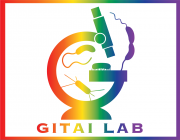Quantitative genome-scale analysis of protein localization in an asymmetric bacterium.
Type
Despite the importance of subcellular localization for cellular activities, the lack of high-throughput, high-resolution imaging and quantitation methodologies has limited genomic localization analysis to a small number of archival studies focused on C-terminal fluorescent protein fusions. Here, we develop a high-throughput pipeline for generating, imaging, and quantitating fluorescent protein fusions that we use for the quantitative genomic assessment of the distributions of both N- and C-terminal fluorescent protein fusions. We identify nearly 300 localized Caulobacter crescentus proteins, up to 10-fold more than were previously characterized. The localized proteins tend to be involved in spatially or temporally dynamic processes and proteins that function together and often localize together as well. The distributions of the localized proteins were quantitated by using our recently described projected system of internal coordinates from interpolated contours (PSICIC) image analysis toolkit, leading to the identification of cellular regions that are over- or under-enriched in localized proteins and of potential differences in the mechanisms that target proteins to different subcellular destinations. The Caulobacter localizome data thus represent a resource for studying both global properties of protein localization and specific protein functions, whereas the localization analysis pipeline is a methodological resource that can be readily applied to other systems.

